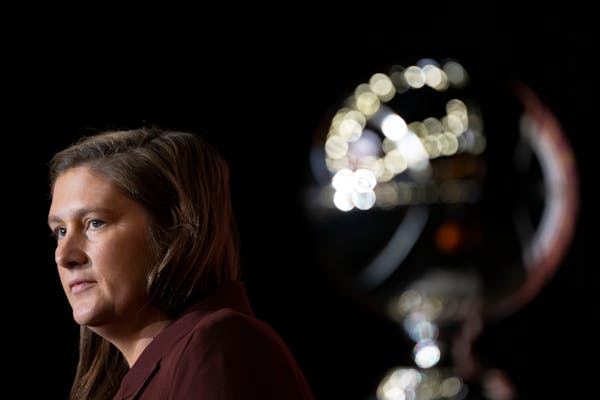College athletic directors don't get mulligans with their coaching hires. They either work out or they don't, and the level of scrutiny of each hire is tied directly to the sport's popularity and financial importance.
Mark Coyle fully understands that reality, which is why the Gophers athletic director must accept that concern and anger are prevailing sentiments regarding the pair of gambles he made in hiring two basketball coaches.
Regardless of how he frames it publicly, Coyle moved on from Lindsay Whalen as women's coach after five unimpressive seasons. Men's coach Ben Johnson has finished last in the Big Ten in each of his first two seasons.
No Big Ten school was worse than Minnesota this basketball season. Six victories and 31 losses, combined, in the Big Ten.
This is an especially sad period for two programs that by Coyle's own admission have languished over the last quarter century.
People can blame coaching but this is Coyle's problem, too. His hires, his problem.
"We've got to figure it out," Coyle said. "We have everything in place. There is no reason why it can't be done here. That's the question we've got to figure out."
That declaration was the equivalent of Coyle holding up a mirror to his face. He says he sees no barriers preventing basketball from thriving at Minnesota. Not facilities. Not institutional support. Nothing, he said.
In that case, the only variable left rests entirely in his hands: Coaching.
He determines who gets to coach every program in his department.
"There's pressure every day," he said. "We want to find the right people."
Coyle entrusted two first-time head coaches with his basketball jobs, which was a leap of faith in a conference as cutthroat as the Big Ten.
Whalen was a gigantic leap considering she had never been a coach at any level. I championed that move under the belief that the potential payoff in hiring the local icon and all-time winner was worth the risk. The moral of the story: Choose logic over the hope of a fairy tale.
Fans screaming for a coaching change in the men's program as well are letting frustration obscure fairness. Coyle is not firing Johnson after two seasons, nor should he, especially after the roster underwent a complete makeover in Year 1.
This season has been deflating. Johnson's freshmen core has provided a foundation, and now the program needs to demonstrate real improvement next season.
Athletic directors are responsible for the success of every sport within a department, but their job performance essentially gets graded by fans and media based on the most high-profile sports, namely football, men's basketball and men's hockey.
Coyle receives high marks for hiring P.J. Fleck and Bob Motzko in football and men's hockey. He signed a successful volleyball coach in Keegan Cook after Hugh McCutcheon sought a career change.
There is a lot riding on Coyle getting it right with his basketball coaches.
College athletics are twirling at a dizzying pace right now. The transfer portal and name, image and likeness (NIL) opportunities have made coaching infinitely more challenging.
Coyle expressed confidence that the third-party NIL collective that manages marketing deals for Gophers athletes holds up competitively with rivals, but he wouldn't admit anything less publicly. The Gophers must do more than tread water in this critical new area.
There is one surefire way to help your NIL opportunities become more robust: Win.
Success in football and men's basketball serves as a gravitational pull with boosters. Think of it this way: Would a fan be more inclined to donate money to an NIL collective if the basketball team loses continuously in front of sparse crowds at Williams Arena, or if the program produces a winner that keeps the old Barn rocking from excitement?
Basketball does not have to be bleak at Minnesota. Coyle was correct when he said he faces pressure every day. He must get this right.



